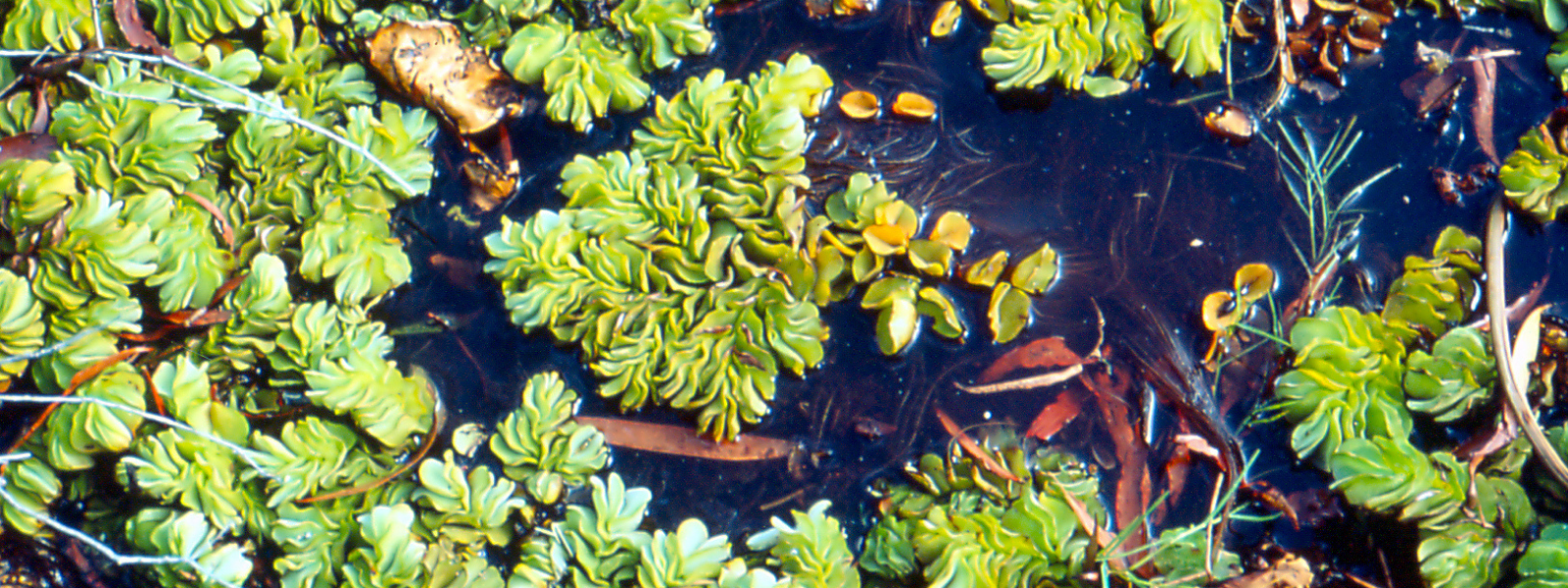
Common Name
Salvinia, Giant Salvinia, Aquarium Watermoss, Kariba Weed, Floating Water Moss
Scientific Name
Salvinia molesta
Family
Salviniaceae
Lifecycle
Perennial
Seasons of Growth
Year-round
Key Distinguishing Feature
Floating aquatic fern with fronds that resemble a row of eggbeaters
• Growth Form: Salvinia species are free-floating aquatic ferns with floating leaves (fronds). The fronds have a unique structure with two floating leaves (blades) and a submerged leaf (root) that dangles beneath the water's surface.
• Leaves: The floating leaves (blades) are typically round to oval in shape and have a distinctive pattern with a central indentation.
• Hairs: The upper surface of the floating leaves is covered in tiny, water-repellent hairs, which give the plant its ability to float on the water's surface.
• Reproduction: Salvinia reproduces rapidly through spore production, fragmentation, and the development of new fronds.
• Habitat: Salvinia species are typically found in slow-moving or stagnant freshwater bodies, such as ponds, lakes, rivers, and wetlands. They can form dense mats that cover the water's surface.
Ecological Impact:
• Giant Salvinia (Salvinia molesta) is considered a highly invasive aquatic plant in many regions. It can reproduce quickly and form thick mats that block sunlight, reduce oxygen levels, and disrupt aquatic ecosystems.
• These mats can also impede water flow, hinder navigation, and clog irrigation systems.
Control Methods:
• Control of invasive Salvinia species like Giant Salvinia often involves a combination of mechanical, chemical, and biological methods.
• Mechanical methods include the physical removal of the mats from the water's surface.
• Herbicides may be used for control, but care must be taken to use them safely and effectively, following local regulations.
• Biological control measures, such as introducing natural predators or herbivorous insects, are sometimes used to manage Salvinia populations.
• Preventing the spread of Salvinia through contaminated water equipment and taking early action to control small infestations are crucial for effective management.
Salvinia species, especially Giant Salvinia, pose significant challenges as invasive aquatic plants and require active management to protect native aquatic ecosystems and water infrastructure. Local environmental agencies often provide guidance on the best control practices for these invasive species.




